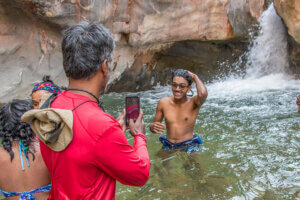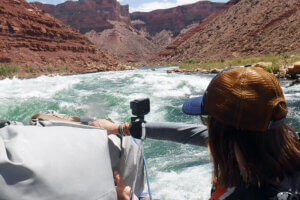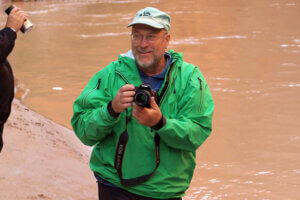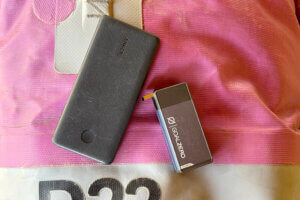When you’re going on a “once in a lifetime” trip, it makes sense that you want to take pictures to commemorate the event!
But what type of camera should you bring?!
Here are some options recommended by a former professional photographer and Grand Canyon team member, Dean.
Cell Phone
 Guests often choose to use their phones as a camera on their river trip. You will not have cell reception in the canyon. We recommend placing your phone on Airplane Mode, switching it to run on Low Power, and turning off your WIFI and GPS features. We know it can be tempting but resist the urge to look through and edit your photos on the trip. Enjoy your time in the canyon and the scenery around you. Photos rarely do the beauty and scale of the canyon justice anyways.
Guests often choose to use their phones as a camera on their river trip. You will not have cell reception in the canyon. We recommend placing your phone on Airplane Mode, switching it to run on Low Power, and turning off your WIFI and GPS features. We know it can be tempting but resist the urge to look through and edit your photos on the trip. Enjoy your time in the canyon and the scenery around you. Photos rarely do the beauty and scale of the canyon justice anyways.
To protect your phone, use a waterproof pouch with a lanyard. These keep your phone dry and readily available on the boats and side hikes. Also, don’t forget to back up your contacts, photos, etc., before your journey, just in case!
Go Pro
 GoPros are pretty much made for the Grand Canyon environment, and people get some awesome footage from these little cameras. They’re perfect for recording the whitewater action.
GoPros are pretty much made for the Grand Canyon environment, and people get some awesome footage from these little cameras. They’re perfect for recording the whitewater action.
Be sure to use a wrist attachment for your camera so you can hang on to the raft and still record. The head and chest strap accessories do not work well on our trip types.
Waterproof Point-and-Shoot Camera
A small waterproof camera is a great option due to its built-in durability. Many brands are also known for their shock and dust-proof features. Even if your point-and-shoot camera suffers damage on the trip, you can usually salvage the memory card without risking expensive equipment or the entire phone.
DSLR
The Grand Canyon offers spectacular views around every bend of the river. You may want to consider bringing your DSLR to use in camp or on breathtaking side hikes. However, it can only be used on calm sections of the river while on the boats. Many rapids pack a punch and when the guide tells you to hang on with two hands, they mean to hang onto the raft and not your camera! No shot is worth injuring yourself over.
We strongly recommend ensuring your camera before bringing it onto the Colorado River.
How do you protect your camera?
 Water, fine sand, sun, and high temperatures can be detrimental to your camera. You’ll need to actively protect it from these damaging elements.
Water, fine sand, sun, and high temperatures can be detrimental to your camera. You’ll need to actively protect it from these damaging elements.
A simple way to keep your camera safe is simply by keeping it with you in the personal dry bag that we provide during orientation. The bag has roughly a 7-inch diameter and is about a foot tall when closed securely. This is where you can keep sunscreen, your bandana, AND your camera. Water is always a concern, but these dry bags do a pretty amazing job of keeping that pesky stuff out (as long as you seal it correctly!). That being said, we do suggest an added layer of protection, such as a small waterproof case inside the dry bag.
Another option is bringing a small Pelican case. Sand, wind, water, humidity, you name it; if it is in the Pelican case, you’re pretty safe. The downside is that it can be a little clumsy. You’re also responsible for keeping an eye on it and securing it with you on the boats (carabiners work great). The other downside is that it can be tough to access and open if you see something you want to capture quickly.
How do you charge your camera?
We recommend bringing a small personal power bank to recharge your camera. They’re fairly inexpensive, portable, and can be used multiple times throughout a trip. Read more about charging here.
Drones are prohibited within the Park boundaries. All Grand Canyon Whitewater river trips are 100% in Grand Canyon National Park, and therefore, regardless of whether or not you are a licensed operator, all drone use is prohibited on a river trip in Grand Canyon.


































